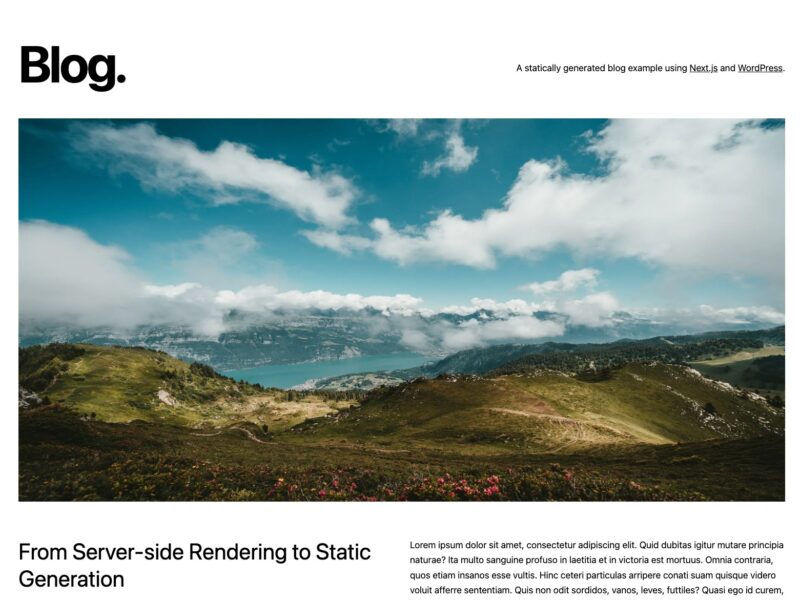ISR Blog with Next.js and WordPress

Type: Code
Framework: Next.js
CSS: Tailwind
This example demonstrates an Incremental Static Regeneration Blog using Next.js and WordPress as the data source.
Features:
- Incremental Static Regeneration (ISR) blog example.
- Utilizes WordPress as the data source.
- Provides a live demo at https://next-blog-wordpress.vercel.app.
- You can deploy your own instance.
How to Use:
Follow these steps to set up and use the example:
Step 1 – Prepare your WordPress site:
- You need a WordPress site.
- Install the
WPGraphQLplugin to add a GraphQL API to your WordPress site.
Step 2 – Populate Content:
- Create at least 2 posts in your WordPress admin.
- Use dummy data for content.
- Add an author from your WordPress users.
- Include a Featured Image.
- Fill in the Excerpt field.
- Publish the posts.
Step 3 – Set up environment variables:
- Copy the
.env.local.examplefile to.env.local. - Set
WORDPRESS_API_URLin.env.localto your WordPress GraphQL endpoint.
Step 4 – Run Next.js in development mode:
- Install dependencies with
npm installoryarn install. - Start the blog with
npm run devoryarn dev.
Step 5 – Add authentication for Preview Mode (Optional):
- This step is optional and involves setting up authentication for WPGraphQL.
- It allows access to unpublished posts.
- Requires adding the
WPGraphQL JWT pluginto WordPress and configuring it. - Follow additional instructions in the example for authentication.
Step 6 – Try preview mode:
- Create a new post in WordPress but do not publish it.
- Enable Preview Mode by visiting the specified URL with your secret and post ID.
- You can view the post in Preview Mode and exit when done.
Step 7 – Deploy on Vercel:
- Deploy your project to Vercel by pushing it to a Git repository and importing it to Vercel.
- Ensure that environment variables on Vercel match your
.env.localfile.
Demo and Deployment:
You can access the live demo here and deploy your own instance using the provided instructions.
Enjoy using this example for an ISR blog with Next.js and WordPress!